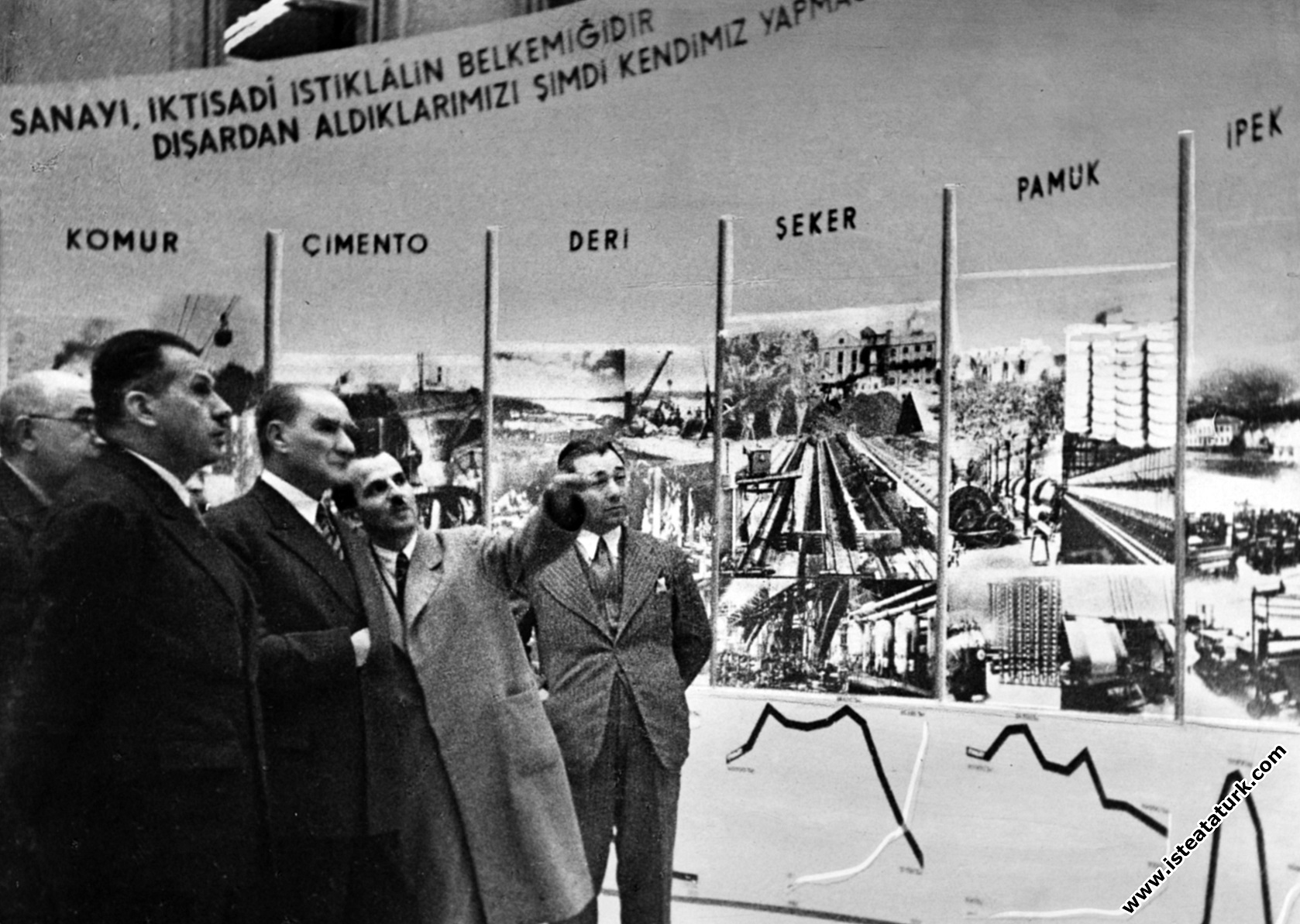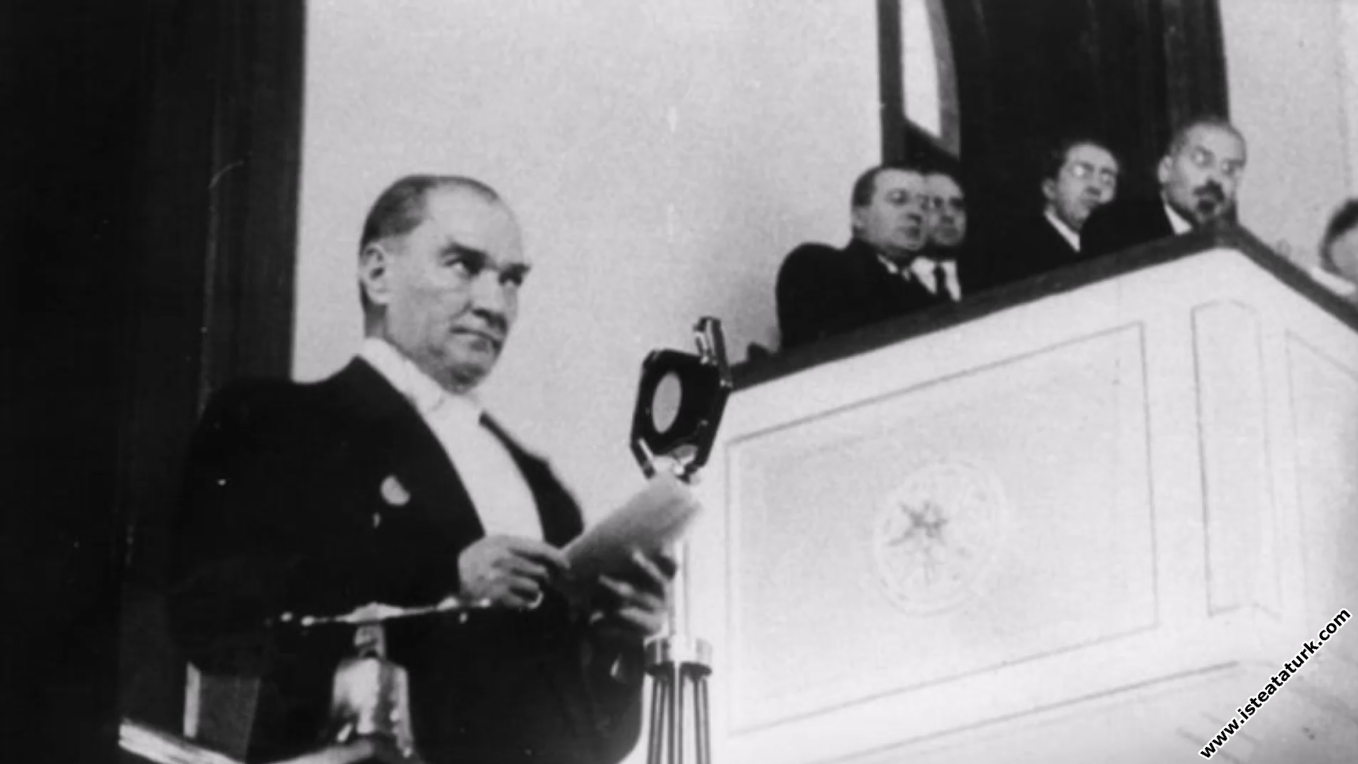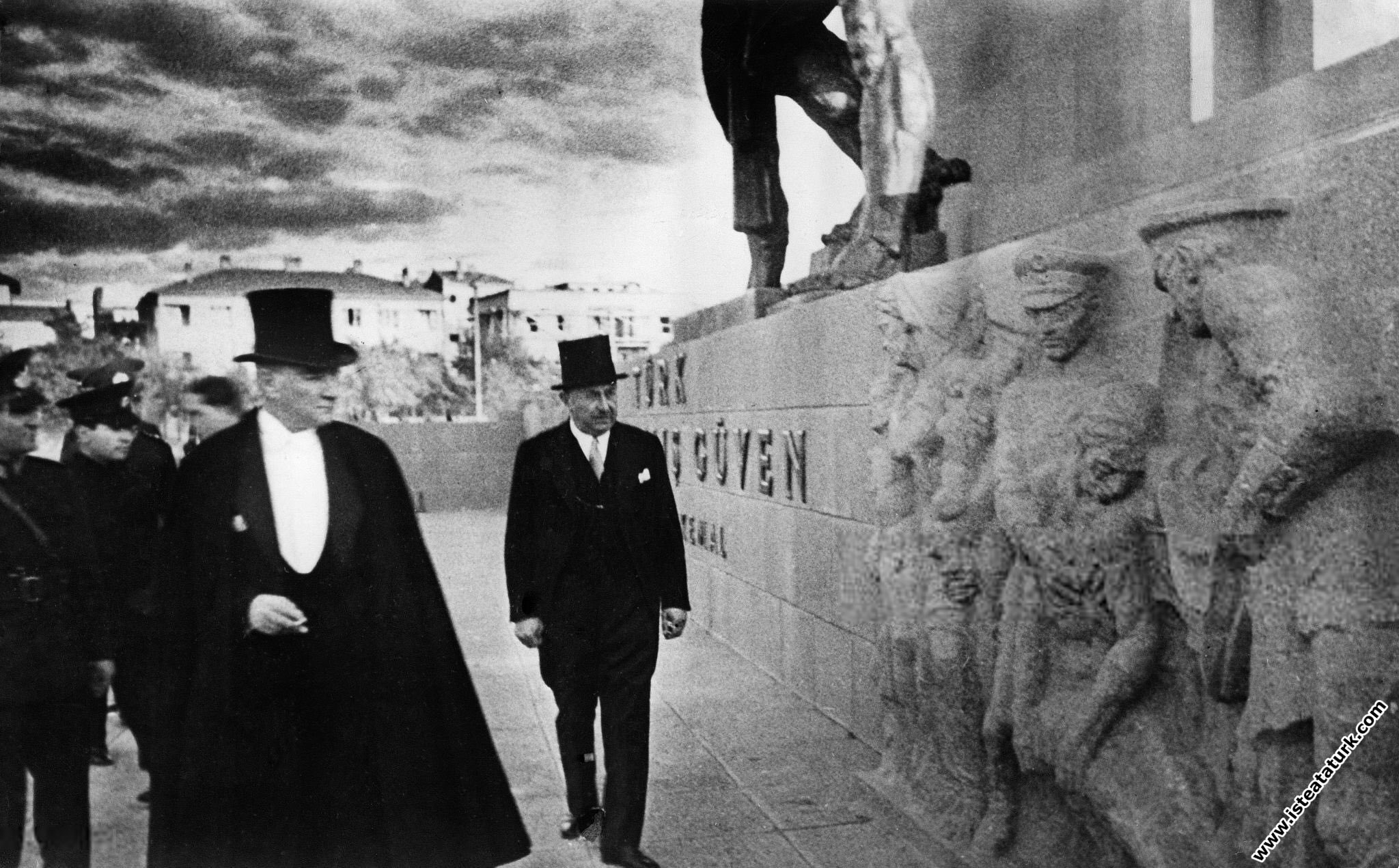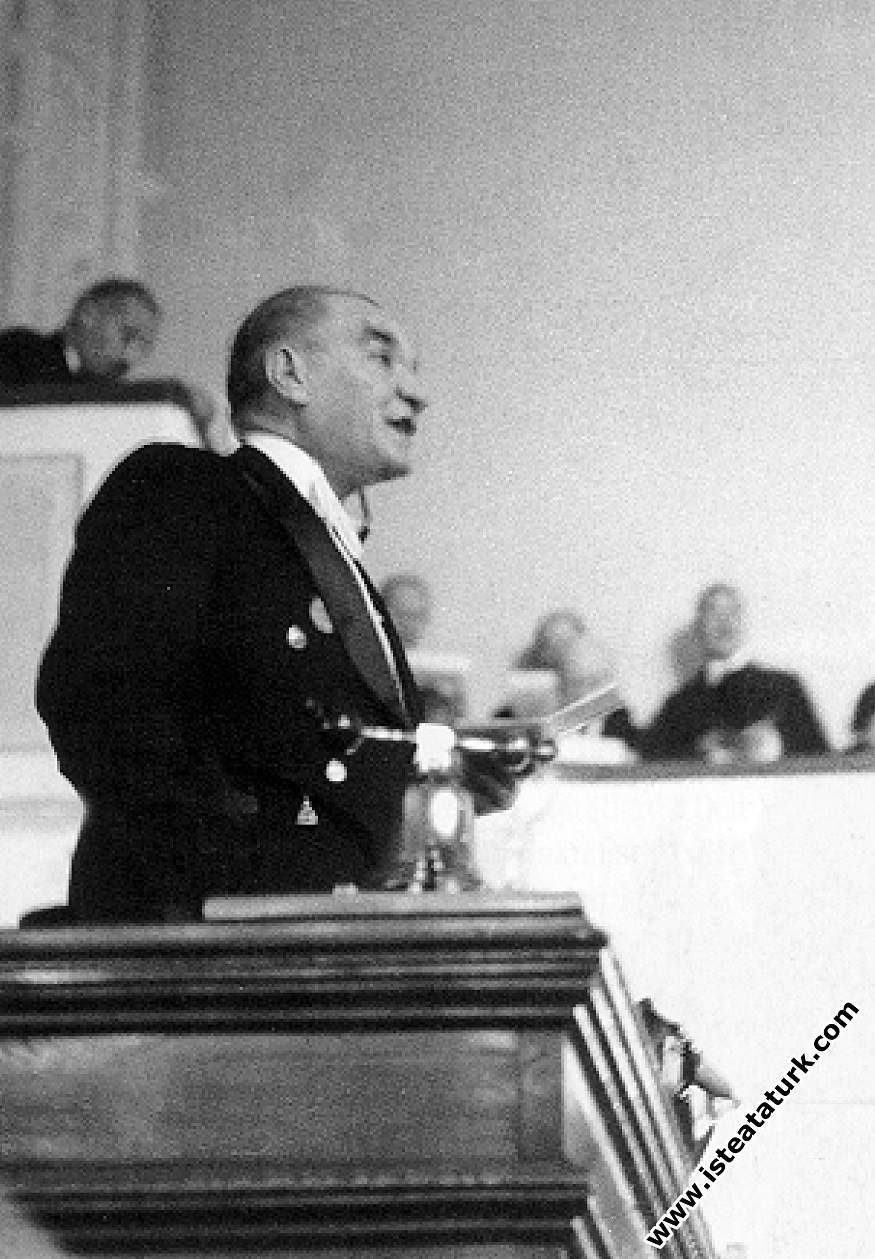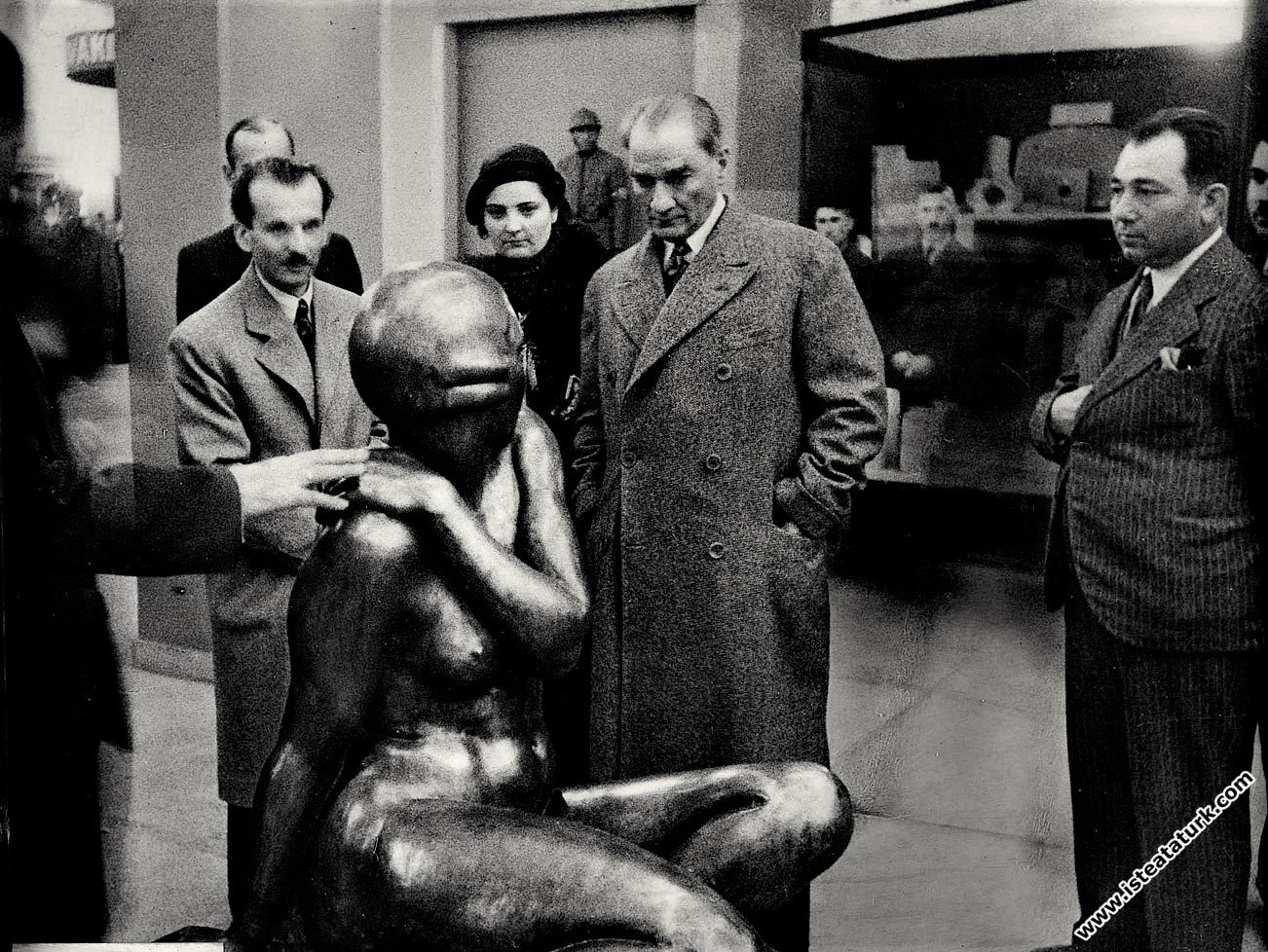Atatürk visiting the Domestic Goods Exhibition at the Ankara Exhibition House. (10.11.1934)
Atatürk visiting the Domestic Goods Exhibition at the Ankara Exhibition House. (10.11.1934)
Atatürk Boulevard, Exhibition House, 1934
Mustafa Kemal Atatürk was very proud that day at the Ankara Exhibition House. At the age of 11, he was in front of his eyes for the first fruits in the production of domestic goods of the Republic.
The National Economy and Savings Society, which was founded in 1929, said : “To accustom the people to struggle with waste, to live economically and economically; to promote, popularize and make use of domestic goods; to try to increase the quantity of our domestic goods, to bring them to the level of comparable goods outside in terms of fortitude and grace, and to reduce their prices; was working with the aim of increasing the availability of our domestic goods . 1
In 1933, the Society decided to build an exhibition building where local goods would be exhibited and organized an international competition. The project of a Turkish architect was found successful in the competition. Şevki (Balmumcu) Bey's design was a very special piece. And it was conceived and designed only for exhibitions. These words belong to the young architect: “One does not make a 90-degree turn while visiting the exhibition. So I made the hall circular.” 2
Ankara's Exhibition House was opened on 29 October 1934, on the 11th anniversary of the Republic. There was an important event at its opening: the Industrial Exhibition. It was open for three weeks. 90 thousand people visited.
Şevket Balmumcu's Exhibition House
The First National Architecture Period, which was called the National Architectural Renaissance in pre-Republican Turkey and coincided with the years 1908-1927, combined with the European style and brought an eclectic Ottoman revivalism to life. The aim is to combine the new construction techniques (reinforced concrete, iron, steel) with the decotative element (hemispherical domes, pointed arch, ornamental tile decoration) specified in Usul-i Mimari-i Osmani and to create the unique architectural pattern of the state.
In the following years, the proclamation of the Republic affected the country economically, culturally and socially; The claim to establish a modern capital city where a life under the leadership of democracy will lead has led to the steps taken in the development of architectural structures in Ankara. The International Architecture period avoided the architectural understanding of the previous period and was implemented by making plans for the solution of the purpose for which the buildings were to be used. The basic design concept of the period: reinforced concrete skeleton, cubic mass form, wide glazed and unadorned facades.
In 1933, a competition was organized for the idea of "Exhibition House", which was requested to be built in line with the needs by the National Economy and Savings Society. Although the winner of the competition was the Italian architect Paolo Vietti Violi, who also designed the Ankara Stadium, the cost required for the project was found to be too high. Şevket Balmumcu was chosen for the Exhibition House project, as the architectural understanding of the period, which was shaped on the foundations of simplicity, fluency and functionalism, suggested that the resources spent on buildings should be used more sparingly and carefully.
The Exhibition House, whose construction started in 1933, consists of an asymmetrically placed entrance block and a long, horizontal volume with rounded ends balanced by the characteristic vertical clock tower. It resembles a large ship with its horizontal strip windows placed on the long hull of the building and its chimney-like reinforced concrete tower. Today, this immediately recognizable and exciting building on Atatürk Boulevard has become a modernist icon of Kemalist Ankara.
.png)
.png)
The building, which was built on a sloping land, was arranged as two levels by taking advantage of this situation. Larger objects such as lower level agricultural machinery, cars, engines; The upper level is reserved for smaller objects such as photos, graphics, and wallboards. In "Arkitekt", the architectural magazine of the period, published by Şevket Balmumcu with Sedat Hakkı Eldem, Seyfi Arkan, Zeki Sayar and Abidin Mortaş, the building's "strength and maturity reached as the last point of national existence" was described with praise. The Exhibition House, which was completed within a year and became one of the most important public buildings, also hosted the exhibition held in 1934 to celebrate the five-year development plan. Photographs of the building have been published on postcards, in newspapers, and primarily on the pages of La Turquie Kemaliste.3
.jpg)
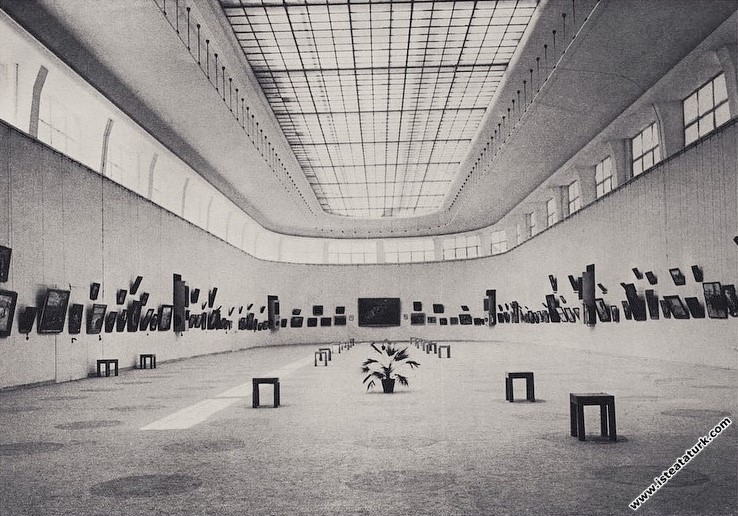
Source : 1- Gökhan Akçura, Türkiye Sergicilik ve Fuarcılık Tarihi, İstanbul 2009, s. 122.
2- Gökhan Akçura, age, s. 125.
3- https://mozartcultures.com/sevket-balmumcunun-sergi-evi/
